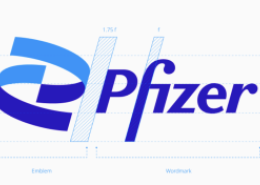Pfizer Announces Positive Marstacimab Results from Pivotal Phase 3 Hemophilia A and B Trial
- Study demonstrates statistically significant and clinically relevant reduction in annualized bleeding rate compared to prophylaxis and on-demand intravenous regimens
- Marstacimab, if approved, has the potential to become the first once-weekly subcutaneous treatment for people living with hemophilia B and the first treatment administered as a flat dose for people living with hemophilia A or B
- A novel, investigational anti-tissue factor pathway inhibitor, marstacimab’s mechanism of action is differentiated from the current standard for hemophilia
NEW YORK--(BUSINESS WIRE)-- Pfizer Inc. (NYSE: PFE) today announced that the pivotal Phase 3 BASIS clinical trial (NCT03938792) evaluating marstacimab has met its primary endpoints, having demonstrated statically significant and clinically meaningful effects. Marstacimab, a novel, investigational anti-tissue factor pathway inhibitor (anti-TFPI) being studied for the treatment of hemophilia A or B for people without inhibitors to Factor VIII (FVIII) or Factor IX (FIX), was administered weekly with flat (not weight-based) dosing in the trial as a subcutaneous 300 mg loading dose followed by 150 mg once weekly.
“Despite significant treatment advances in recent years, many people living with hemophilia unfortunately continue to experience bleeding episodes and are required to manage their disease with frequent intravenous infusions,” said Chris Boshoff, M.D., Ph.D., Chief Development Officer, Oncology and Rare Disease, Pfizer Global Product Development. “These results support the potential for marstacimab to become the first once-weekly non-factor treatment for people with hemophilia B and a treatment option that helps address the diverse needs of patients with hemophilia A or B without inhibitors. These needs include preventing excessive or potentially life-threatening bleeds, while at the same time reducing the burden of treatment with once-weekly, subcutaneous administration.”
The BASIS trial demonstrated that prophylactic treatment with marstacimab resulted in a statistically significant and clinically relevant reduction in annualized bleeding rate (ABR) in people living with severe hemophilia A and moderately severe to severe hemophilia B without inhibitors. 116 people living with hemophilia were treated with marstacimab during a 12-month period versus a prophylaxis and on-demand intravenous regimen with FVIII or FIX, administered as part of usual care in the six-month lead-in period. In the cohort of patients treated with on-demand factor replacement intravenous therapy in the lead-in period, marstacimab demonstrated superiority (P< 0.0001) with a 92% reduction in bleeds. The results also showed superiority (p=0.0376) with marstacimab compared to prophylaxis, with a 35% reduction in ABR.
The safety profile for marstacimab was consistent with Phase 1/2 results and treatment was generally well-tolerated. No deaths were reported and there have been no thromboembolic events or events of consumptive coagulopathy recorded in hemophilia patients that have been enrolled in clinical trials investigating marstacimab.
Discovered by Pfizer scientists, marstacimab has a mechanism of action that is differentiated from FVIII and FIX replacement treatments that are the current treatment standard for hemophilia. Instead of replacing missing or insufficient clotting factors, marstacimab targets TFPI, one of the body’s natural mechanisms that inhibits the initiation of blood clotting. By targeting the Kunitz-2 domain of TFPI, marstacimab may help re-establish balance between bleeding and blood clot formation.
Marstacimab is in development as a prophylactic treatment to prevent or reduce the frequency of bleeding episodes in individuals with severe hemophilia A or moderately severe to severe hemophilia B, in each case with or without inhibitors. The inhibitor cohort of the BASIS trial is completing enrollment and is expected to read out as early as late 2024.
“These encouraging results from the BASIS trial demonstrate marstacimab’s potential as a promising subcutaneous treatment option that could offer improvement over the current standard of care for many living with hemophilia,” said Davide Matino, M.D., M.Sc., Assistant Professor of Medicine, McMaster University. “If approved, marstacimab may both prevent bleeds and reduce the treatment burden that many people living with hemophilia A or B without inhibitors face today.”
Analyses of the full Phase 3 dataset are ongoing, and results will be presented at an upcoming scientific conference. Pfizer will discuss these data with regulatory authorities, with the goal of initiating regulatory filings in the coming months.
Pfizer currently has three Phase 3 programs investigating novel treatment options for people living with hemophilia. In addition to the BASIS study, fidanacogene elaparvovec and giroctocogene fitelparvovec are investigational gene therapy treatments being studied for the treatment of adults living with hemophilia B and hemophilia A, respectively.
About the BASIS study
BASIS is a global Phase 3, open-label, multicenter study evaluating annualized bleed rate through 12 months on treatment with marstacimab, an investigational, novel subcutaneous therapy option, in approximately 145 adolescent and adult participants between ages 12 to <75 years with severe hemophilia A (defined as FVIII <1%) or moderately severe to severe hemophilia B (defined as FIX activity <=2%), with or without inhibitors. Approximately 20% of participants are adolescents (ages between 12 to <18 years old). This study is comparing treatment with a run-in period for patients’ prescribed factor replacement therapy or bypass therapy during a 6-month Observational Phase with a 12-month Active Treatment Phase, during which participants receive prophylaxis (a 300 mg subcutaneous loading dose of marstacimab, followed by 150 mg subcutaneously once weekly) with potential for dose escalation to 300 mg once weekly.
Pfizer is also conducting BASIS KIDS, an open-label study investigating the safety and efficacy of marstacimab in children <18 years of age with severe hemophilia A or moderately severe to severe hemophilia B with or without inhibitors. The study will compare 12 months of historical standard treatment to marstacimab prophylaxis.
About Marstacimab (PF-06741086)
Marstacimab (PF-06741086) is a human monoclonal immunoglobulin G isotype, subclass 1 (IgG1) that targets the Kunitz 2 domain of tissue factor pathway inhibitor (TFPI), a natural anticoagulation protein that functions to prevent the formation of blood clots. Marstacimab is in development as a prophylactic treatment to prevent or reduce the frequency of bleeding episodes in individuals with severe hemophilia A or moderately severe to severe hemophilia B with or without inhibitors.
In September 2019, the U.S. Food and Drug Administration (FDA) granted Fast Track designation to marstacimab for routine prophylaxis to prevent or reduce the frequency of bleeding episodes in hemophilia A with inhibitors or hemophilia B with inhibitors.
About Hemophilia
Hemophilia is a family of rare genetic blood diseases caused by a clotting factor deficiency (FVIII in hemophilia A, FIX in hemophilia B) which prevents normal blood clotting. Hemophilia is diagnosed in early childhood and impacts more than 400,000 people worldwide.1 The inability of the blood to clot properly can increase the risk of painful bleeding inside the joints, which can cause joint scarring and damage. People living with hemophilia can suffer permanent joint damage following repeated bleeding episodes.1,2
For decades, the most common treatment approach for hemophilia A and B has been factor replacement therapy, which replaces the missing clotting factors. Factor replacement therapies increase the amount of clotting factor in the body to levels that improve clotting, resulting in less bleeding.2,3 Approximately 25-30% of people with hemophilia A and 3-5% of people with hemophilia B are unable to continue taking factor replacement therapies because they develop inhibitors to FVIII and FIX.4,5
About Pfizer: Breakthroughs that Change Patients’ Lives
At Pfizer, we apply science and our global resources to bring therapies to people that extend and significantly improve their lives. We strive to set the standard for quality, safety and value in the discovery, development and manufacture of health care products, including innovative medicines and vaccines. Every day, Pfizer colleagues work across developed and emerging markets to advance wellness, prevention, treatments and cures that challenge the most feared diseases of our time. Consistent with our responsibility as one of the world's premier innovative biopharmaceutical companies, we collaborate with health care providers, governments and local communities to support and expand access to reliable, affordable health care around the world. For more than 170 years, we have worked to make a difference for all who rely on us. We routinely post information that may be important to investors on our website at www.pfizer.com. In addition, to learn more, please visit us on www.pfizer.com and follow us on Twitter at @Pfizer and @Pfizer_News, LinkedIn, YouTube and like us on Facebook at Facebook.com/Pfizer.
DISCLOSURE NOTICE: The information contained in this release is as of May 30, 2023. Pfizer assumes no obligation to update forward-looking statements contained in this release as the result of new information or future events or developments.
This release contains forward-looking information about marstacimab, an investigational anti-tissue factor pathway inhibitor, and Pfizer’s hemophilia programs for fidanacogene elaparvovec and giroctocogene fitelparvovec, including their potential benefits, that involves substantial risks and uncertainties that could cause actual results to differ materially from those expressed or implied by such statements. Risks and uncertainties include, among other things, the uncertainties inherent in research and development, including the ability to meet anticipated clinical endpoints, commencement and/or completion dates for our clinical trials, regulatory submission dates, regulatory approval dates and/or launch dates, as well as the possibility of unfavorable new clinical data and further analyses of existing clinical data; whether or when the inhibitor cohort of the BASIS trial will be successful; the risk that clinical trial data are subject to differing interpretations and assessments by regulatory authorities; whether regulatory authorities will be satisfied with the design of and results from our clinical studies; whether and when any applications may be filed with regulatory authorities for marstacimab, fidanacogene elaparvovec or giroctocogene fitelparvovec; whether and when regulatory authorities may approve any such applications,which will depend on myriad factors, including making a determination as to whether the product’s benefits outweigh its known risks and determination of the product’s efficacy and, if approved, whether marstacimab, fidanacogene elaparvovec and giroctocogene fitelparvovec will be commercially successful; decisions by regulatory authorities impacting labeling, manufacturing processes, safety and/or other matters that could affect the availability or commercial potential of marstacimab, fidanacogene elaparvovec and giroctocogene fitelparvovec; uncertainties regarding the impact of COVID-19 on our business, operations and financial results; and competitive developments.
A further description of risks and uncertainties can be found in Pfizer’s Annual Report on Form 10-K for the fiscal year ended December 31, 2022 and in its subsequent reports on Form 10-Q, including in the sections thereof captioned “Risk Factors” and “Forward-Looking Information and Factors That May Affect Future Results”, as well as in its subsequent reports on Form 8-K, all of which are filed with the U.S. Securities and Exchange Commission and available at www.sec.gov and www.pfizer.com.
______________________________
1 Srivastava A, Santagostino E, Dougall A, et al. WFH guidelines for the management of hemophilia, 3rd Edition; 2020. Haemophilia, 26(S6), 1–158. https://doi.org/10.1111/hae.14046.
2 Centers for Disease Control and Prevention. Hemophilia. Last Reviewed: April 2023. https://www.cdc.gov/dotw/hemophilia/index.html.
3 Weyand AC, Pipe SW. New therapies for hemophilia. Blood 2019;133(5):389–398. doi: https://doi.org/10.1182/blood-2018-08-872291.
4 Centers for Disease Control and Prevention. Inhibitors and hemophilia. Last reviewed: April 2023. https://www.cdc.gov/ncbddd/hemophilia/inhibitors.html.
5 Peyvandi F, Garagiola I, Seregni S. Future of coagulation factor replacement therapy. J Throm Haemost. 2013;11 (Suppl. 1):84–98.
View source version on businesswire.com: https://www.businesswire.com/news/home/20230530005109/en/
Pfizer Contacts:
Media Relations
+1 (212) 733-1226
[email protected]
Investor Relations
+1 (212) 733-4848
[email protected]
Source: Pfizer Inc.








